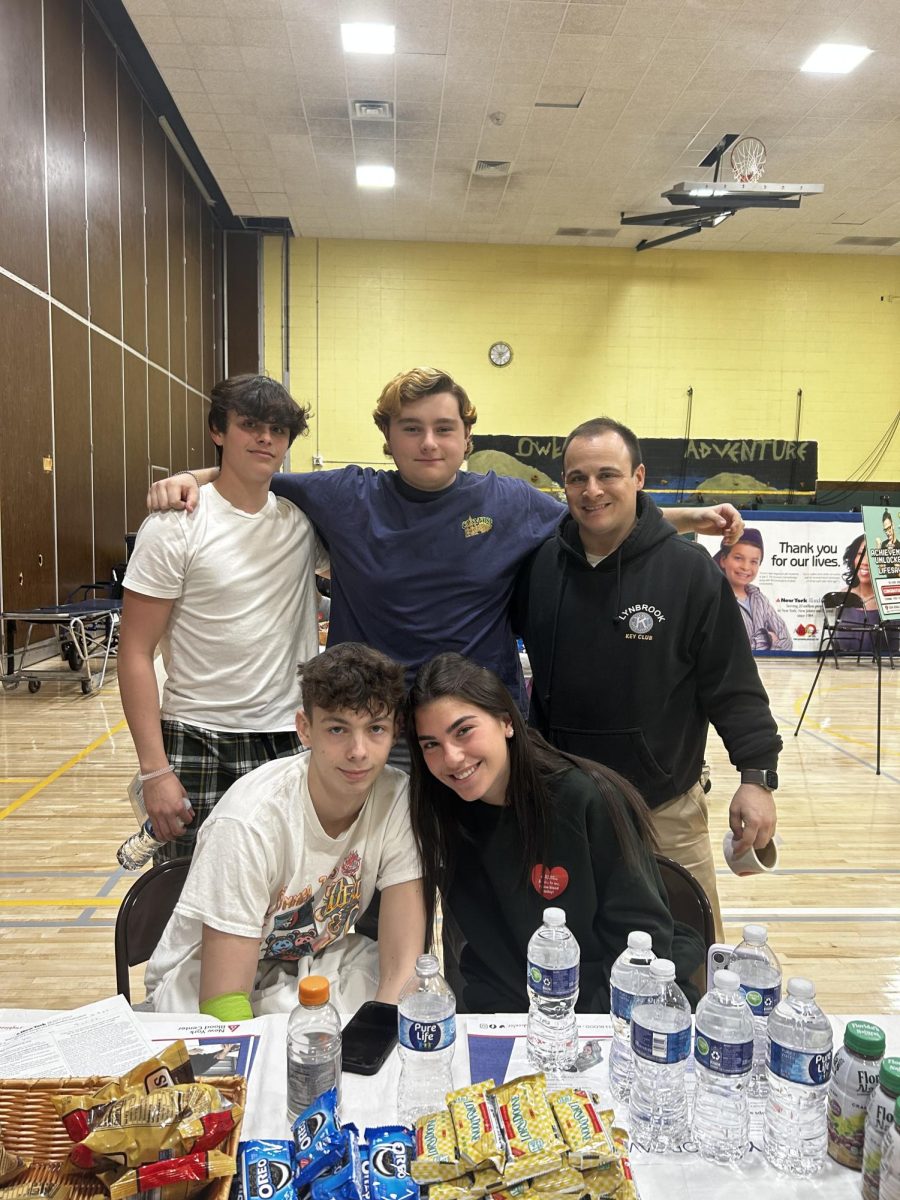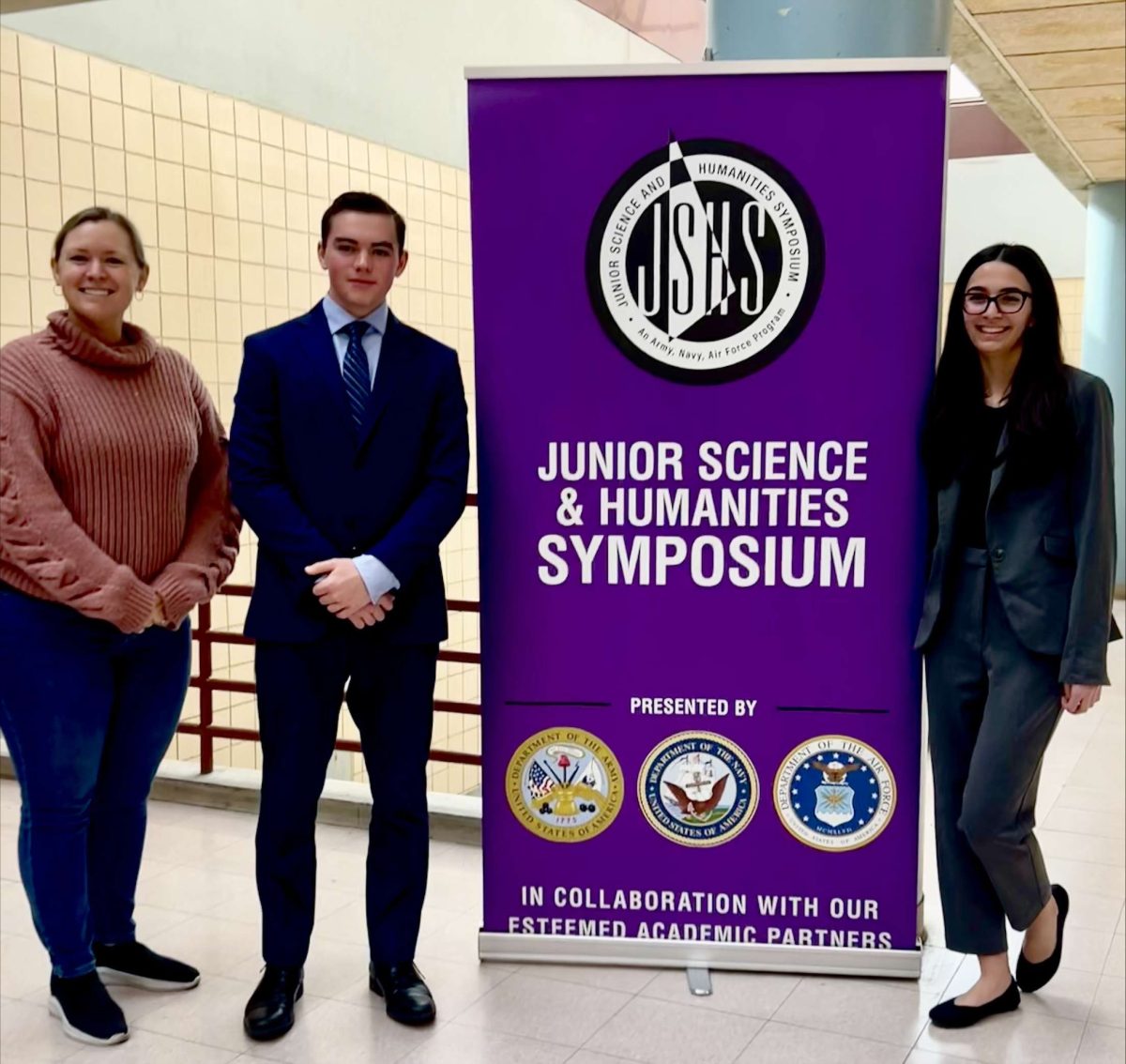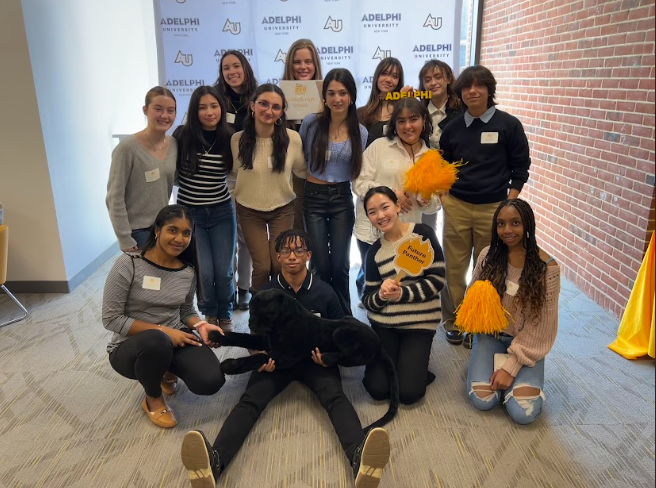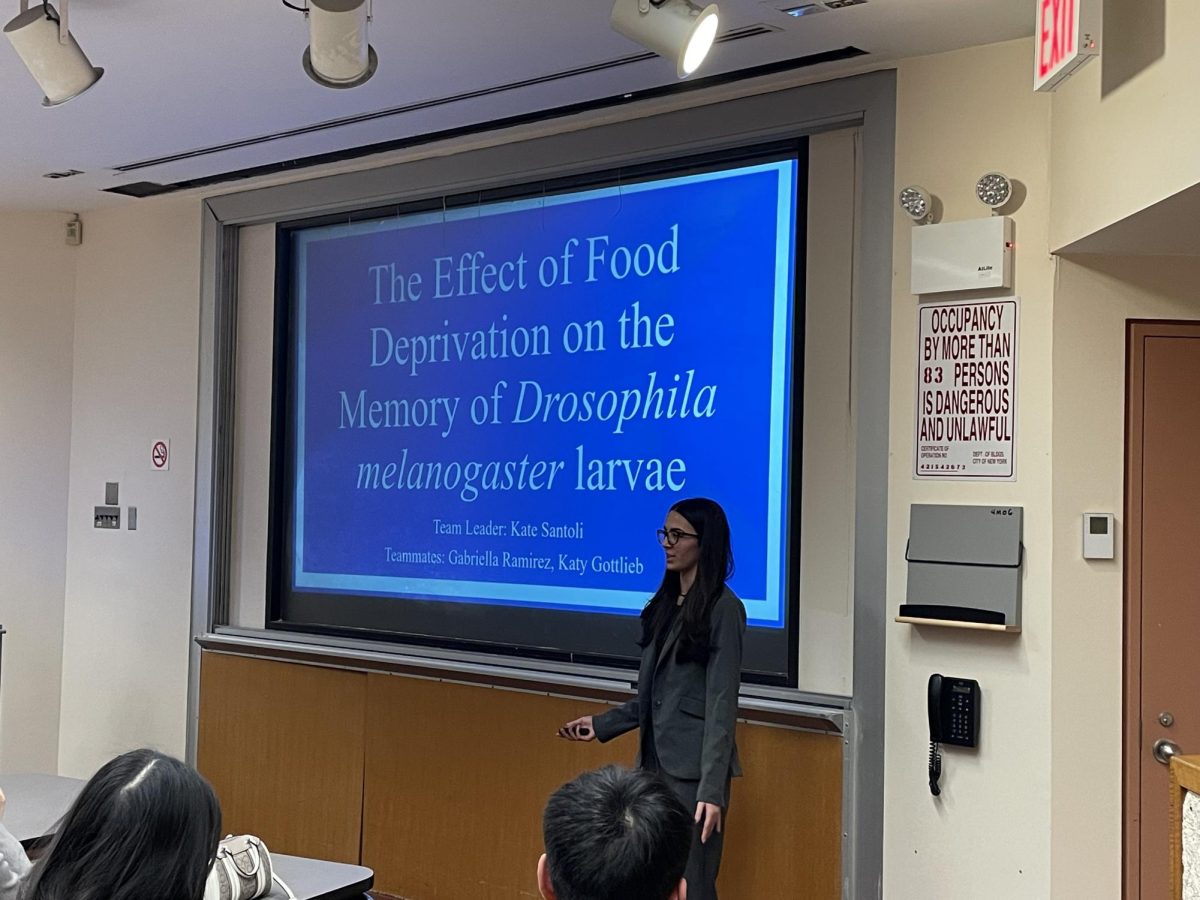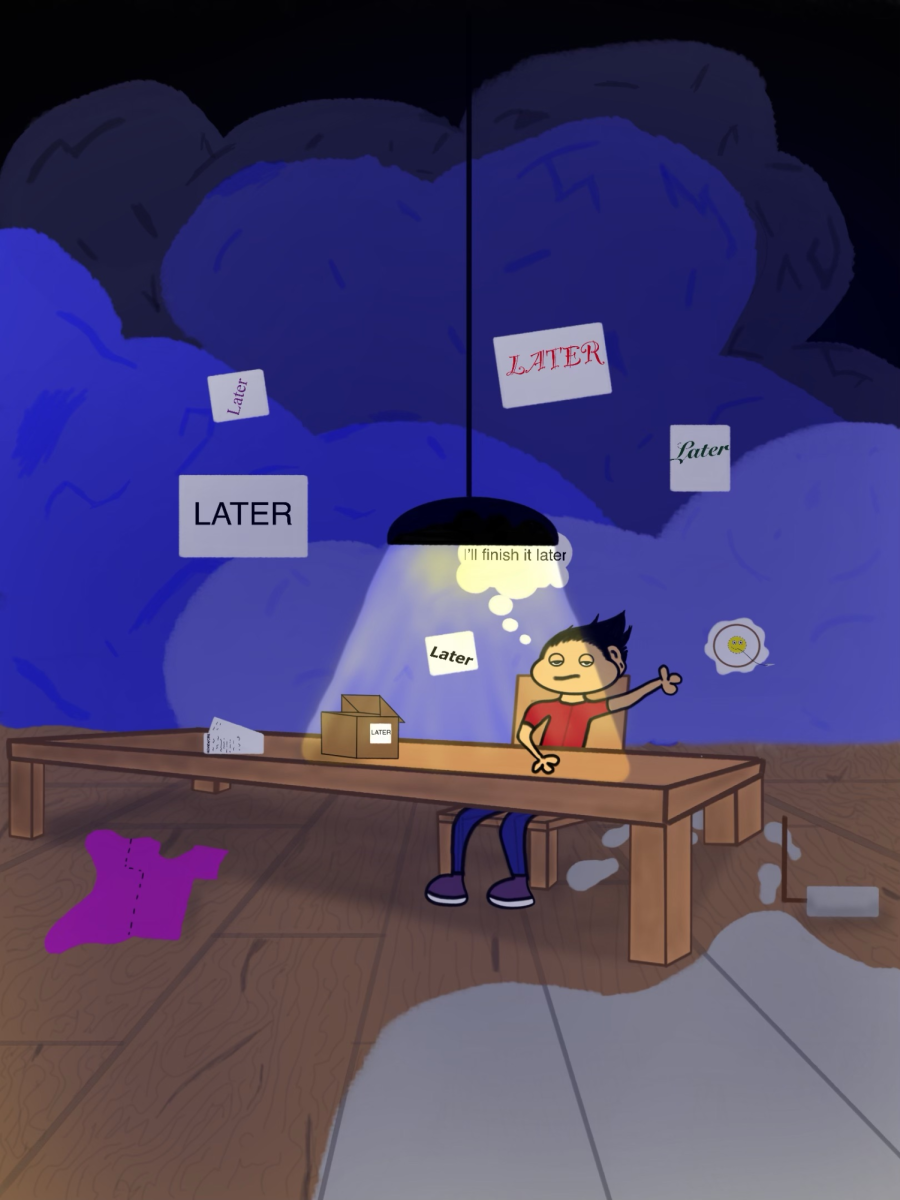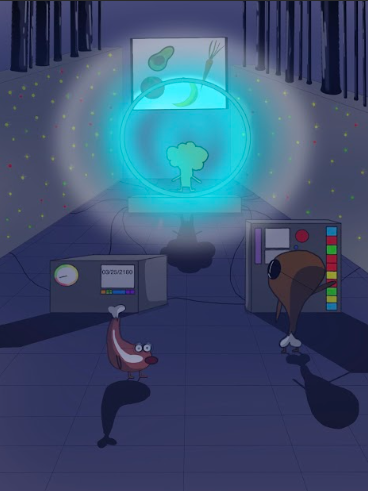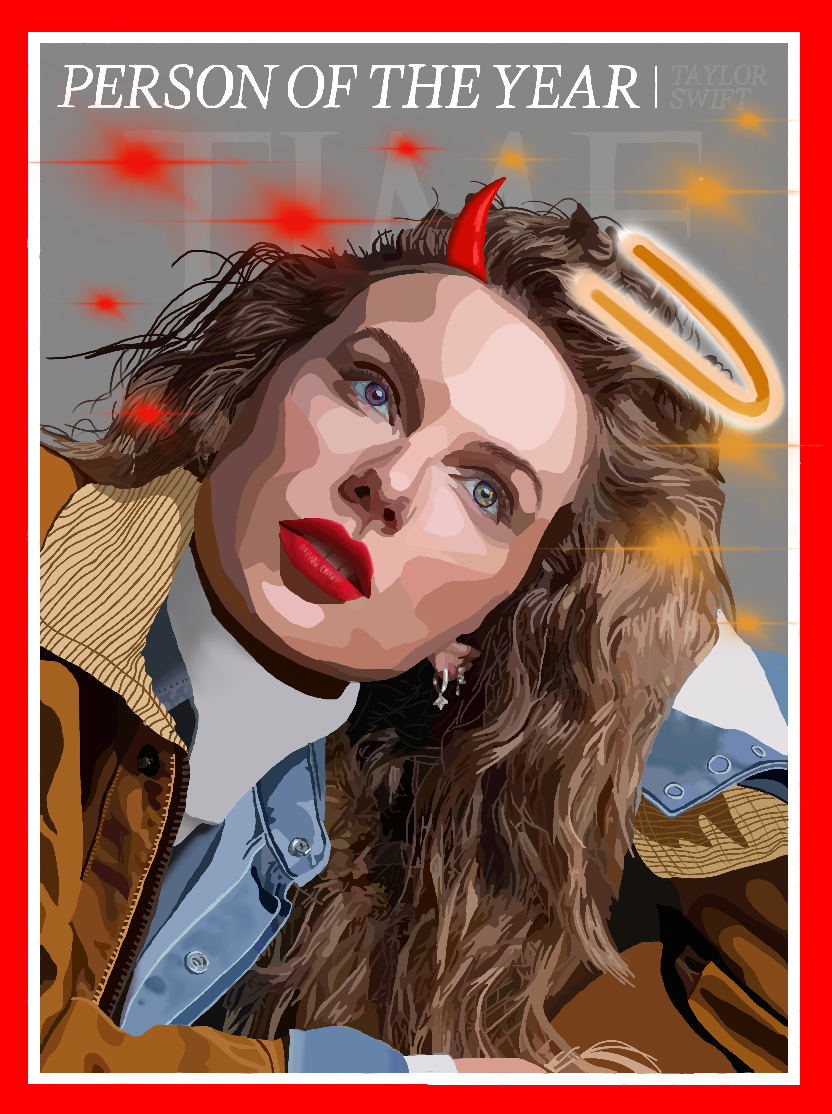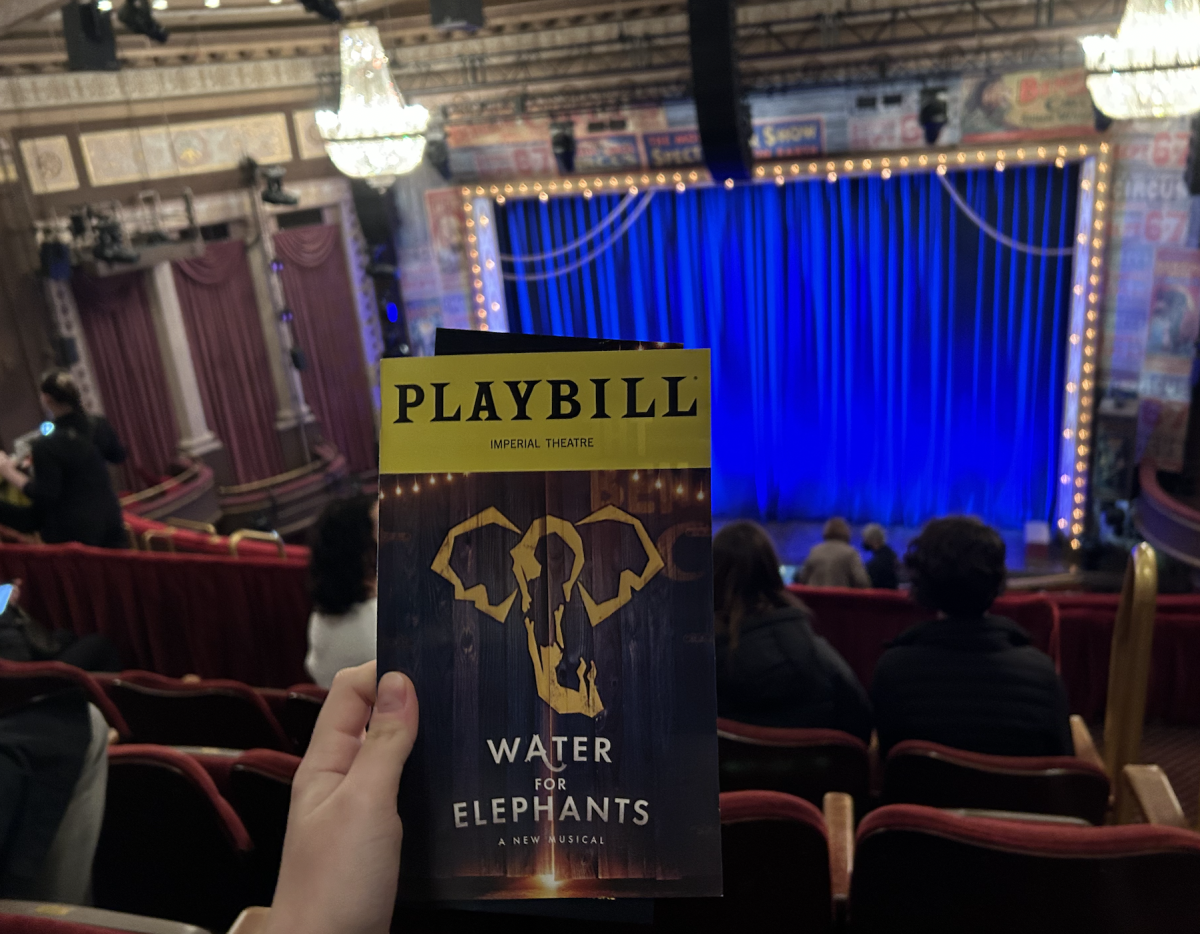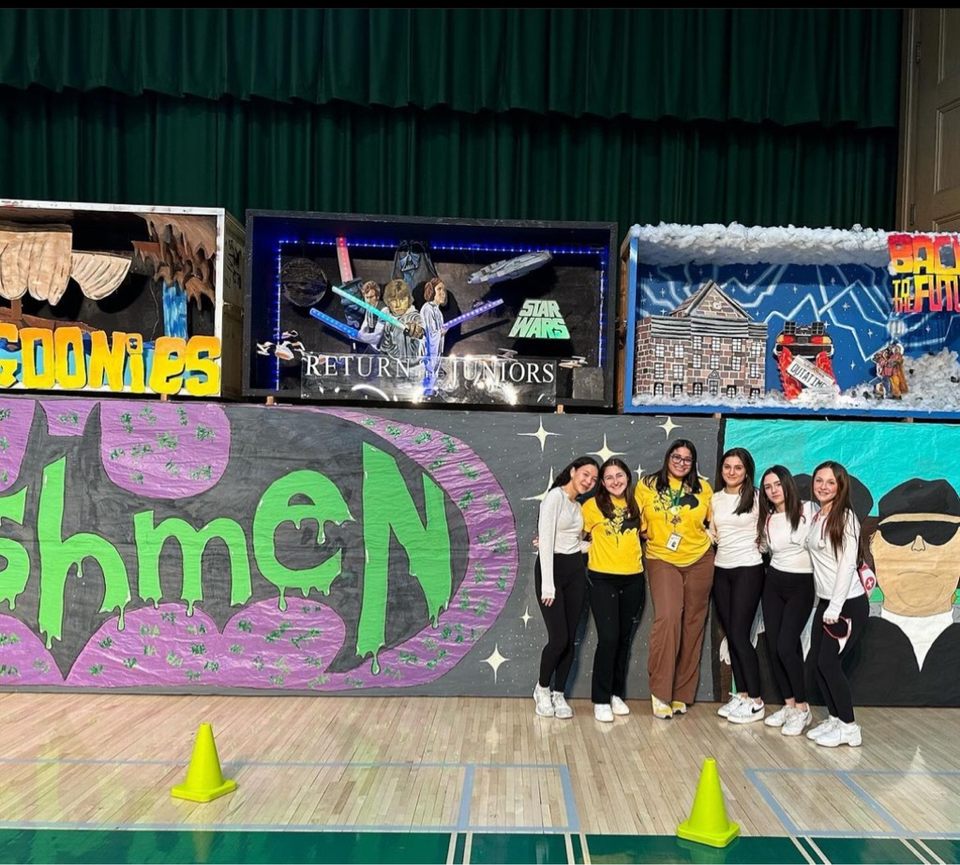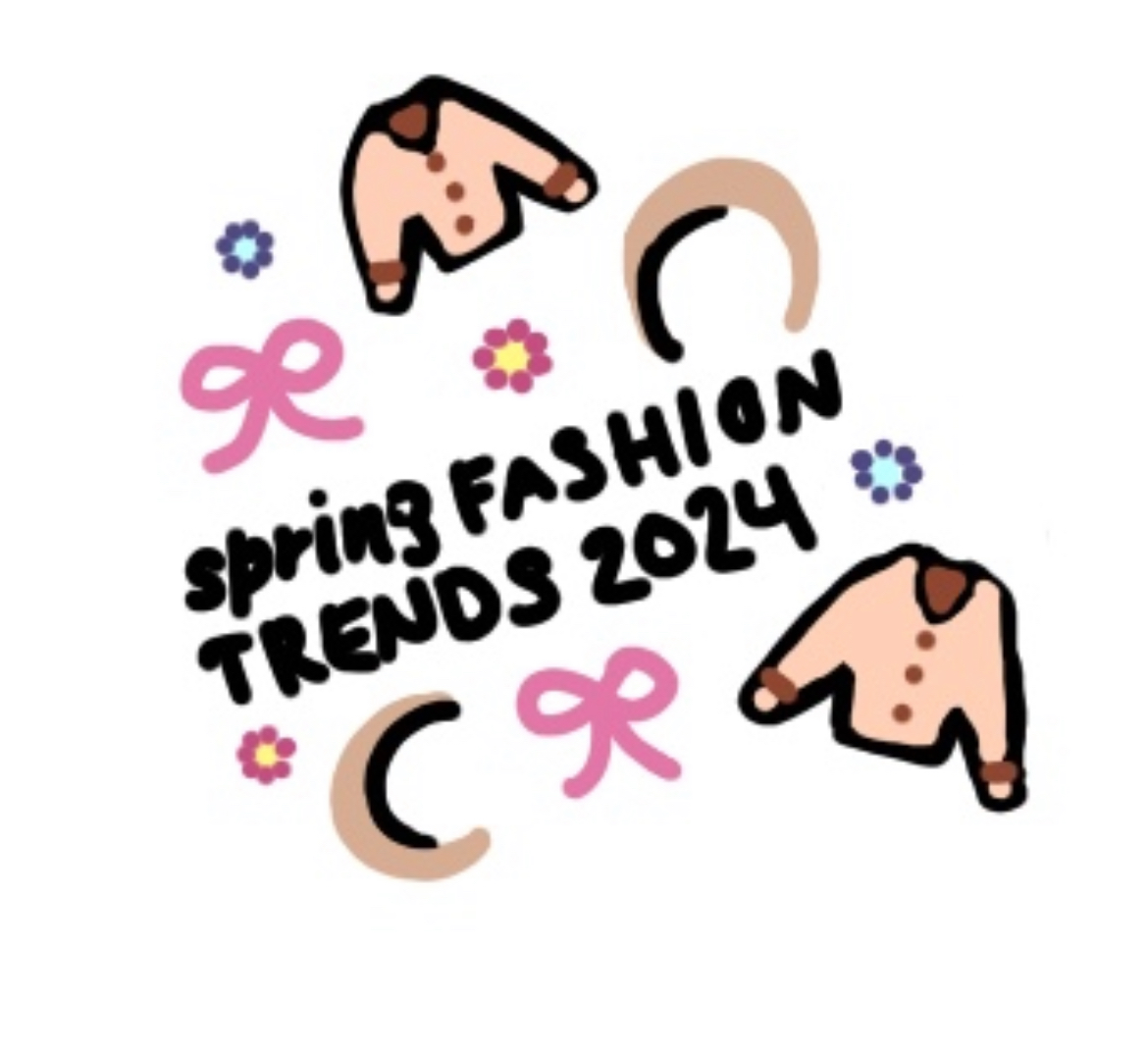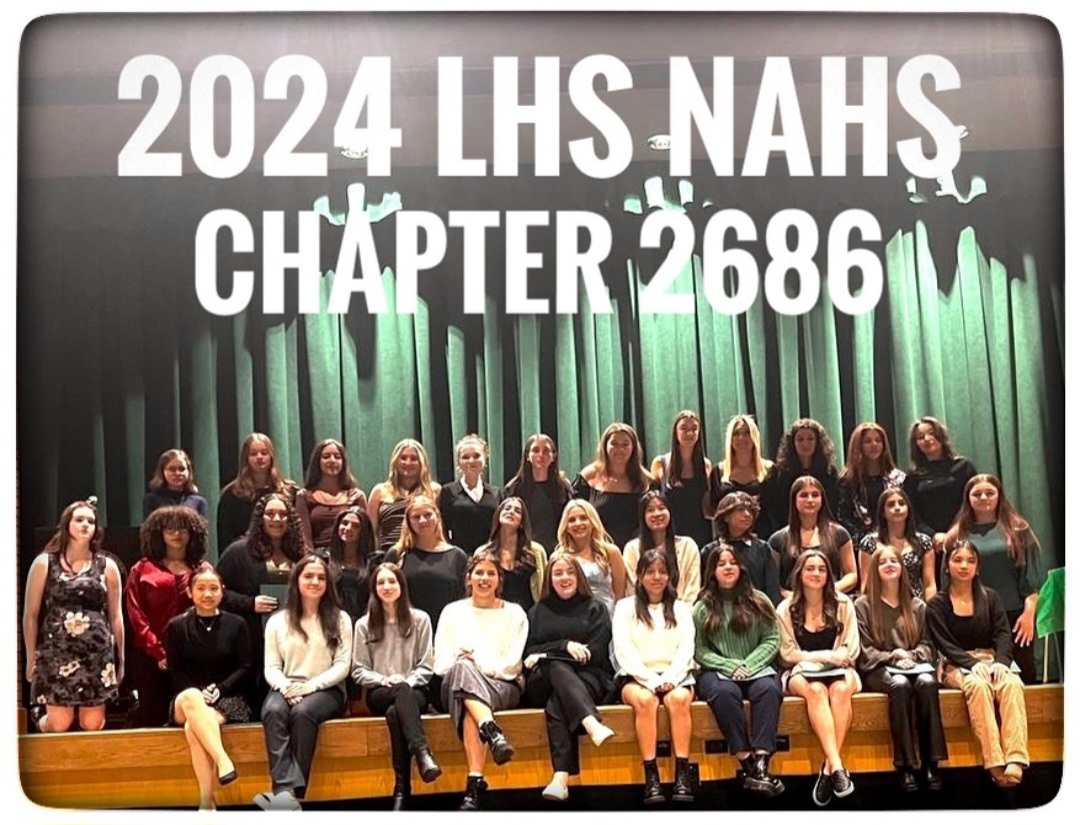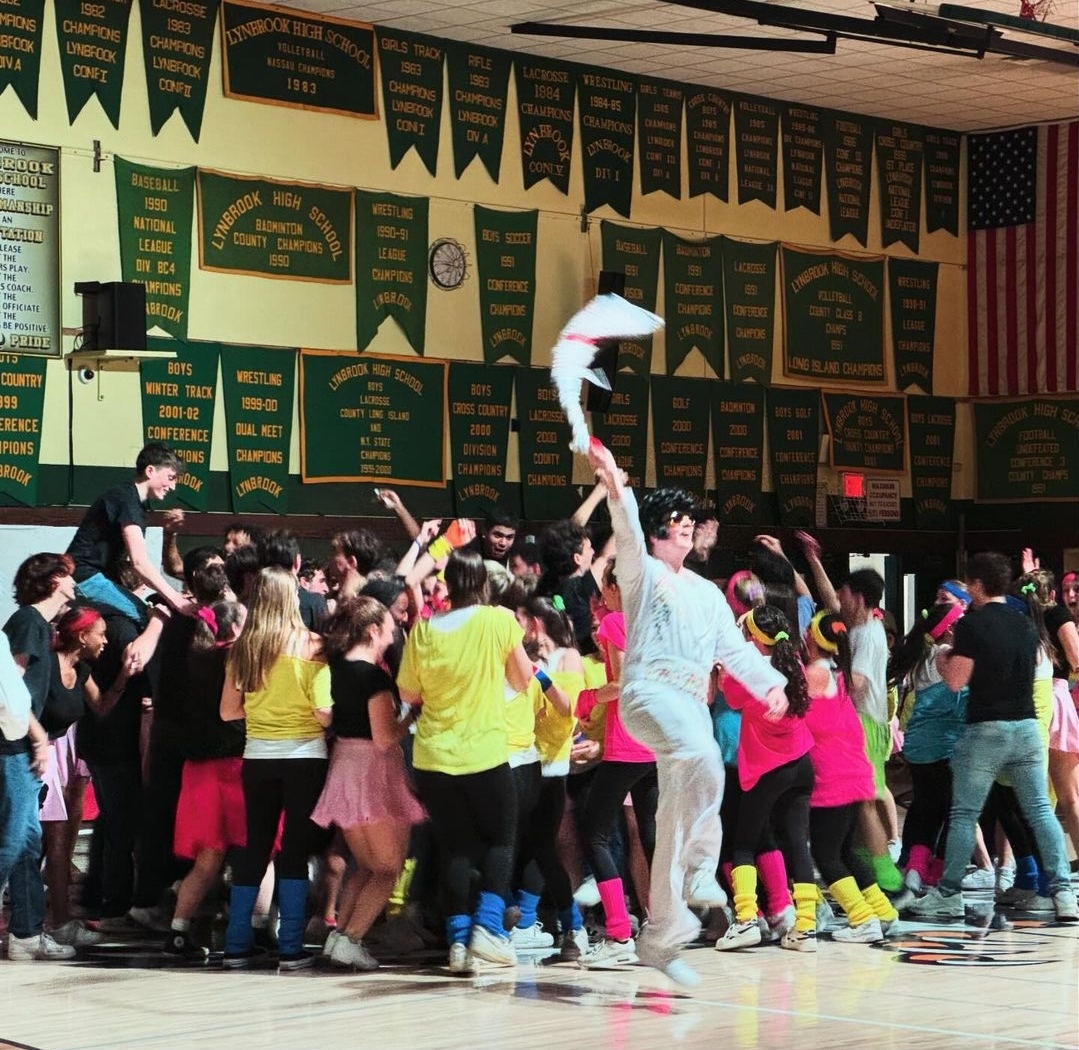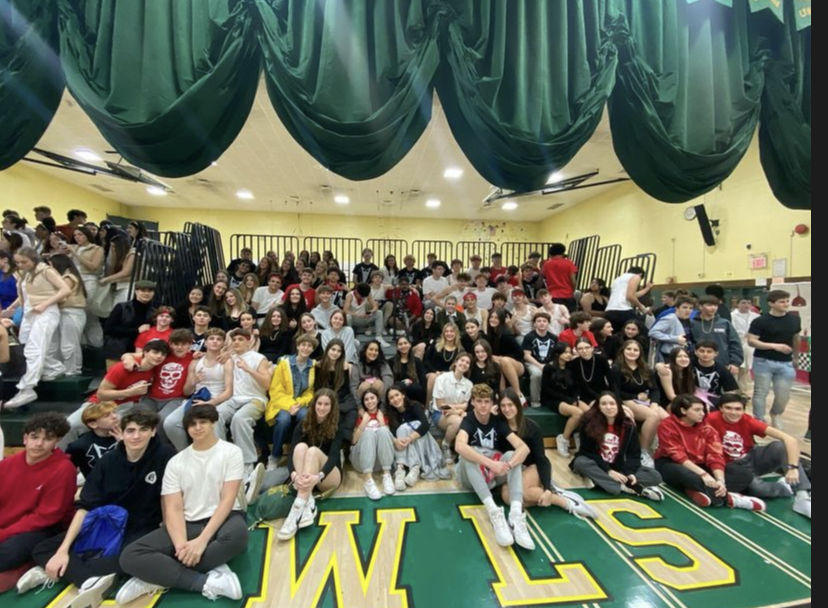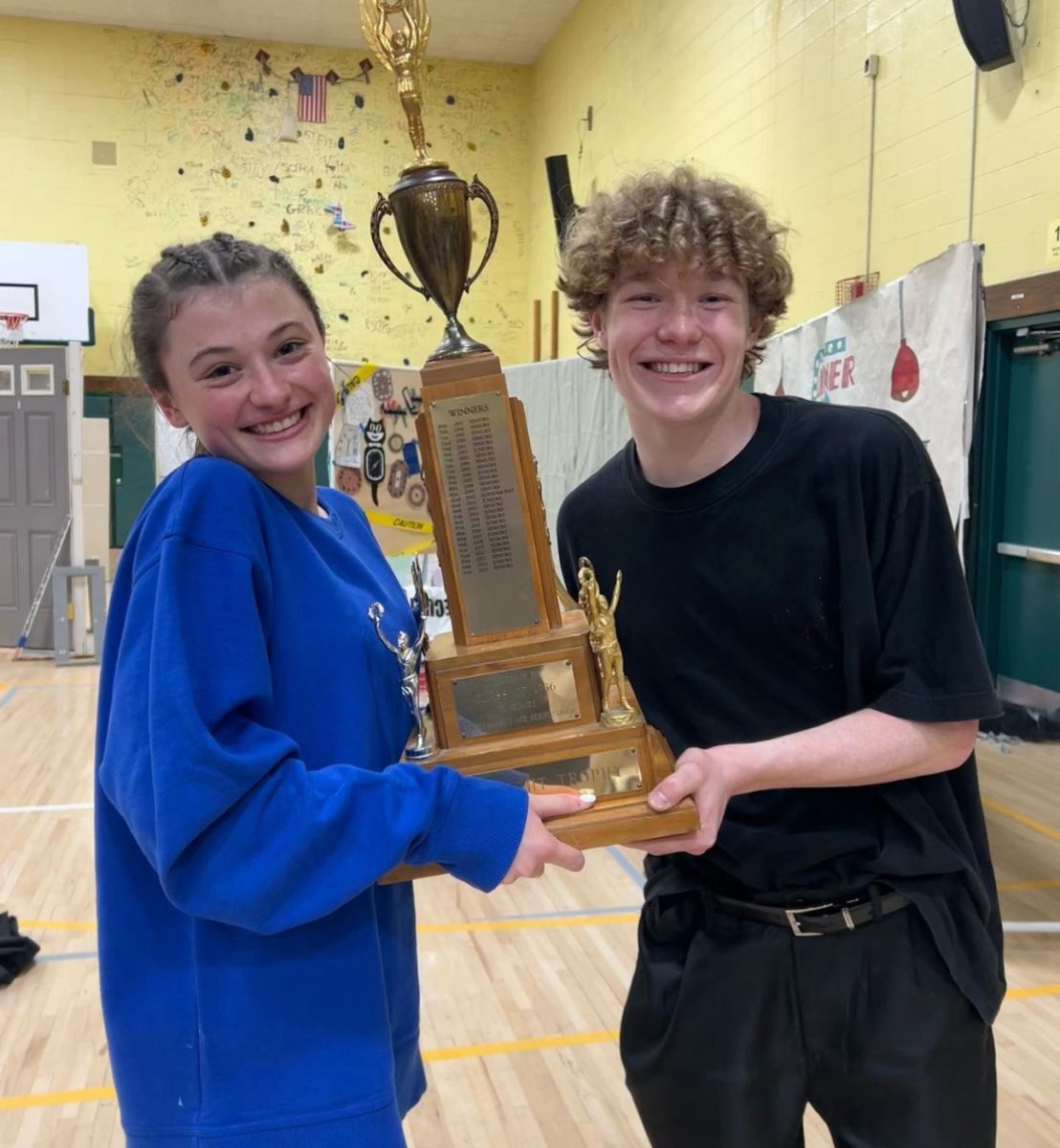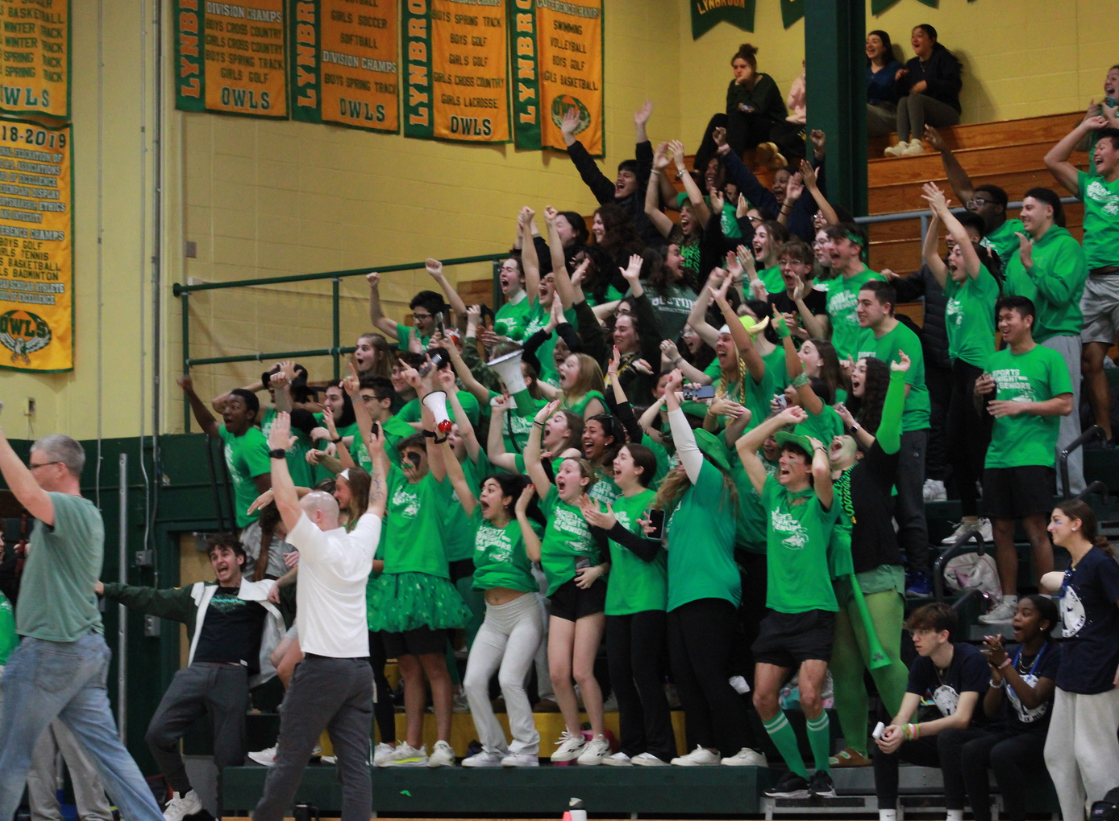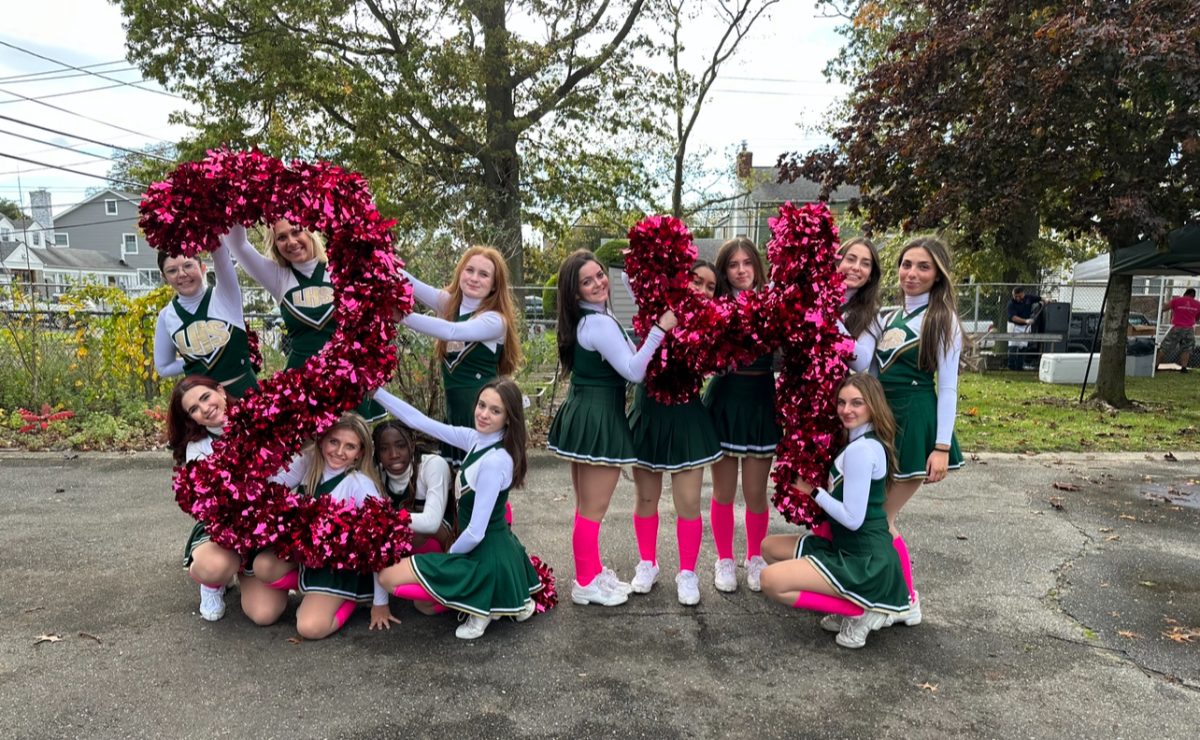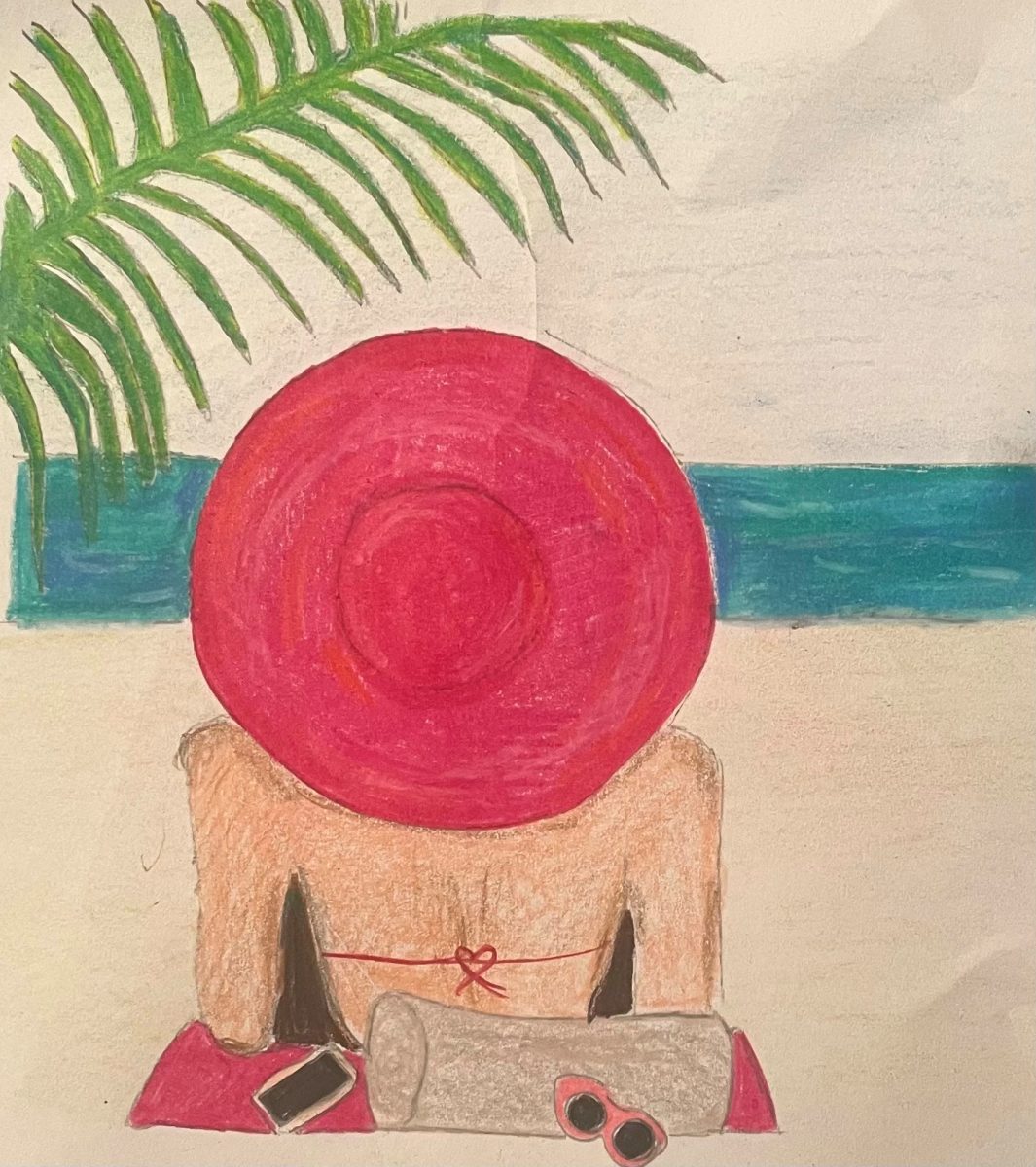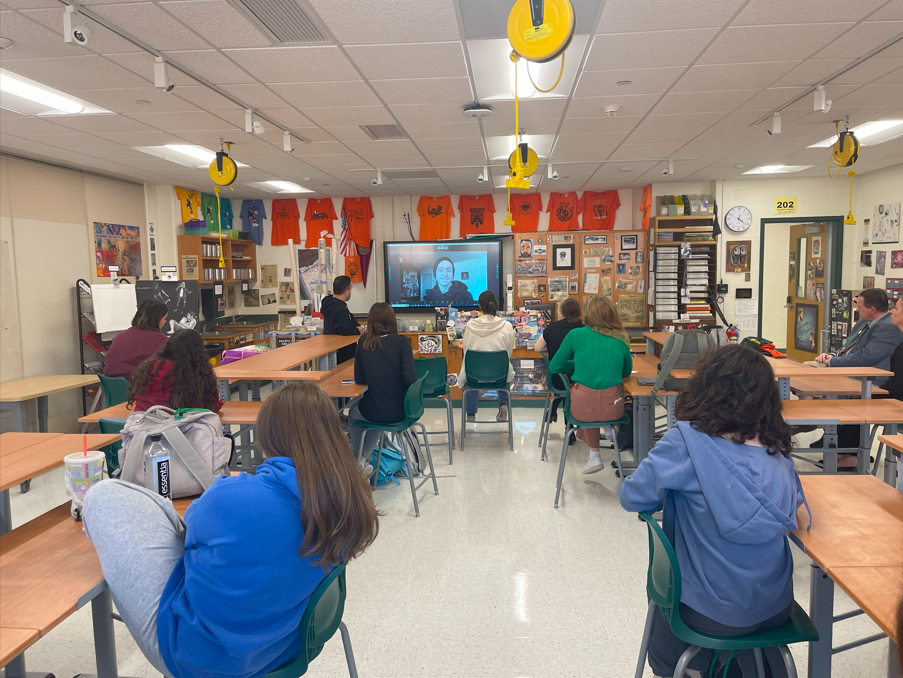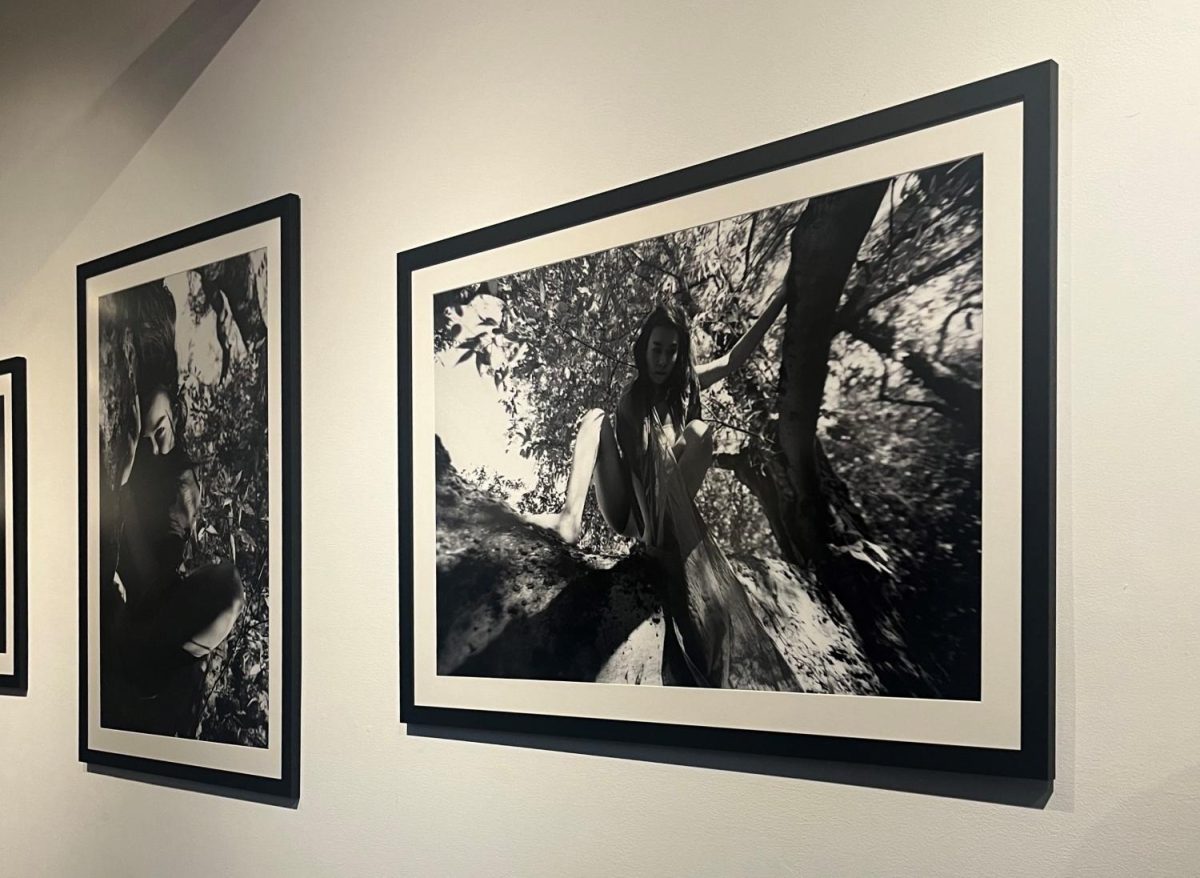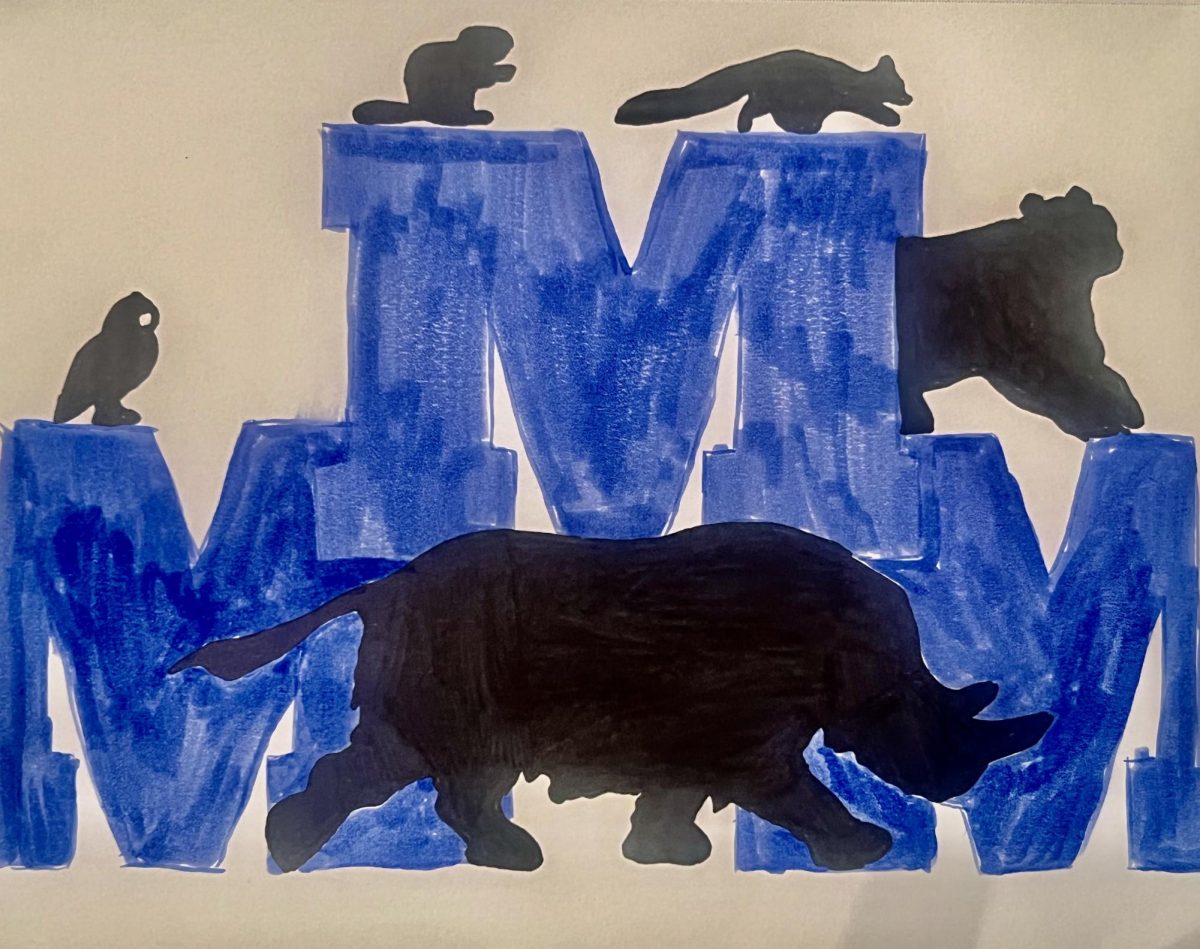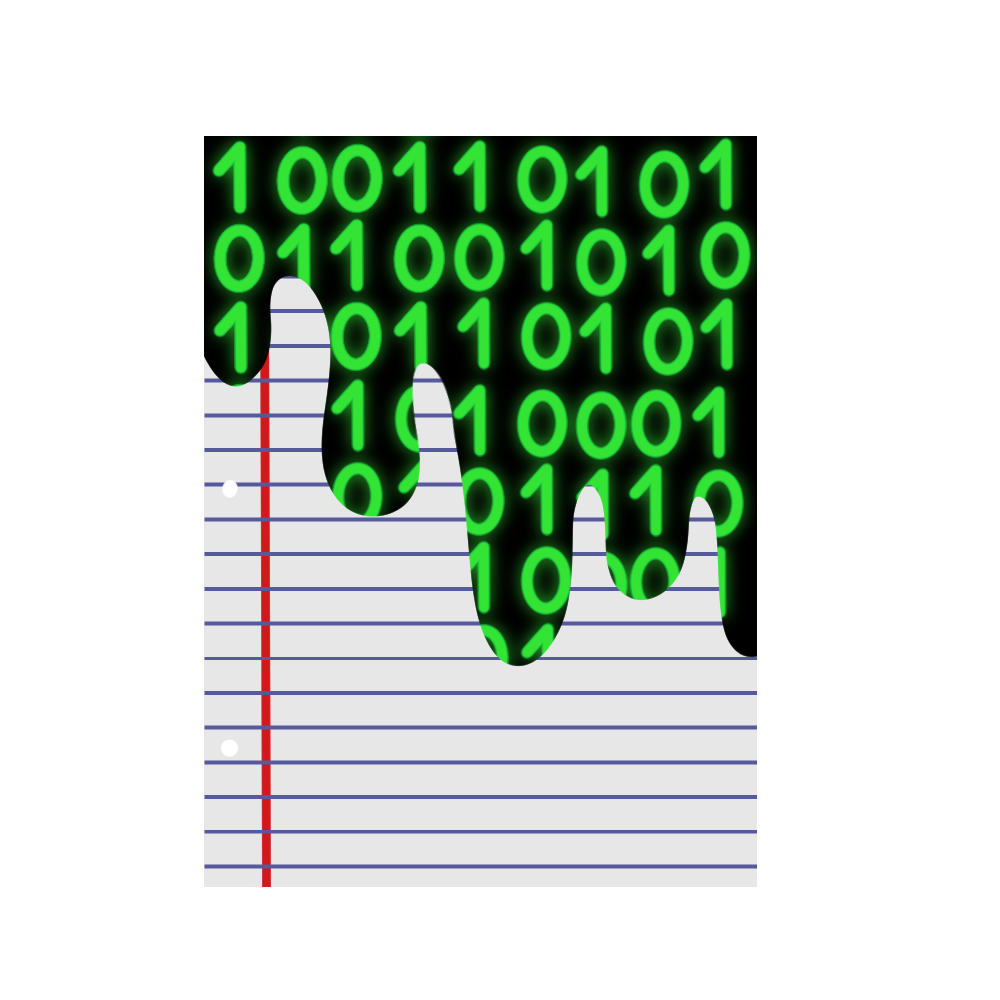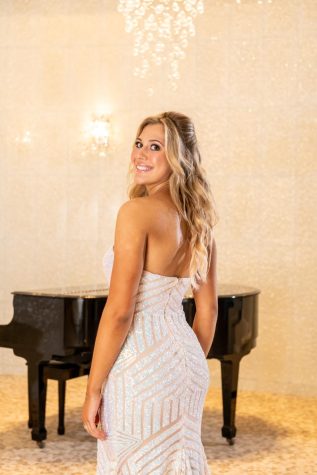The design of the recently renovated new wing of LHS has given the art rooms a “studio feel” and serves as a haven for talented art students. It proves to be especially beneficial to the seniors enrolled in Portfolio Prep, a course designed for aspiring artists who are interested in pursuing a career in the arts. The non-restrictive coursework allows students to investigate and pursue topics in any area of visual arts and provides them with the opportunity to experiment and design pieces using their own creativity.
Art teacher Tom Sena introduced the “Visiting Artist” series prior to the pandemic in which he would invite a professional artist to speak to the portfolio students, either in-person or via webcam, for each marking period of the year. “I want [portfolio students] to get to know professionals. I want [the students] to hear their story and to be able to ask questions about their career track and how they got where they are and why they are successful,” Sena explained when asked why he implemented this program into the curriculum.
I want [portfolio students] to get to know professionals. I want [the students] to hear their story and to be able to ask questions about their career track and how they got where they are and why they are successful.”
— Tom Sena, art teacher
Unfortunately, this series was halted by the pandemic. But a few years later, it has been revived, and the senior portfolio students had the opportunity to speak with professional artist Aaron Nagel.
Nagel is an oil painter from Portland, Oregon, who befriended Sena after being a guest on Sena’s podcast, The Drop. Nagel is a figurative oil painter with no formal training. His hyper-realistic paintings feature mostly women, while others contain subtle commentary on organized religion. His work is frequently displayed in galleries across the country, where it is available for purchase. More recently, his work can be found in New York City at the Harry Projects Gallery, which Sena visited.
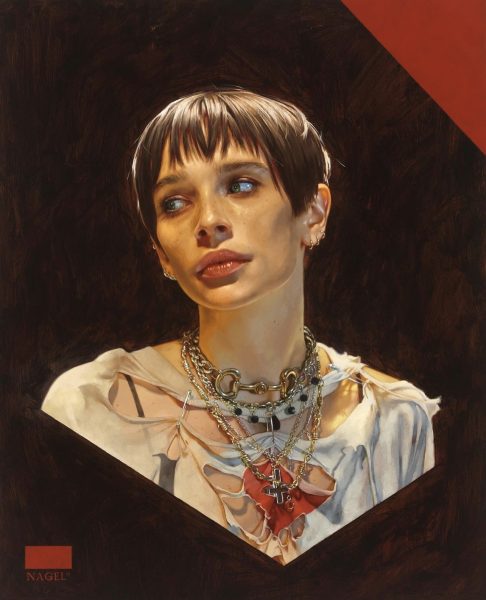
After enrolling in independent studies for music during his senior year of high school, Nagel began to pursue music as a career. He frequently toured with his band as a professional musician. Eventually, however, his “[music] sort of naturally evolved into art as the band morphed and eventually faded.” Nigel added, “By the time we stopped touring, I had enough art and design side jobs to pivot that direction entirely.” He then discovered the art of oil painting, and after years of perfecting his technique on his own, he evolved into the artist he is today.
The day prior to Nagel’s virtual visit, the portfolio students studied and investigated Nagel’s work. “I was immediately intrigued by Aaron’s work because of his hyperrealism. I thought each piece had an interesting subject matter, and I just could not stop looking at them,” senior Mae Dooling related. The students had prepared questions to ask Nagel that focused on different aspects of being a professional artist: the creativity side, the gallery displays, and the business aspect.
Senior Aubrie-Lynn Wilkonski asked Nagel, “How did you decide on using oil as your primary medium? Were there any materials that you previously tried or have tried since?” He responded, “I was a drawer when I was in high school and ever since I was a little kid. At a certain point, the art that I started gravitating towards was big. The large-scale oil paintings of the last 400 years are what I like the most. None of that stuff is acrylic. I just started playing with oil and seeing what that was about and why people were using it. It’s just so broad and lovely and complicated that I haven’t done anything else,” he explained. Nagel further elaborated that the art of oil painting is extremely extensive and that even with tremendous amounts of experience using it, he still feels he does not have a “handle” on it. He is constantly looking to improve his technique in each piece he creates.
Senior Olivia Lanteri inquired, “How do you decide upon a subject, and when you have decided, what is your process in creating a piece?” Nagel responded, “Deciding on a subject is the hardest part for me these days. The kind of execution of the painting, I have a process for it, and I am comfortable with it. Coming up with what to paint, the process gets longer and longer for me. Each painting takes more time, and I am constantly thinking about how much of a commitment each painting is.” He added, “It’s just a lot of time sitting with an image, taking breaks, and working in photoshop. It’s really like if I can’t get it out of my head, if I keep coming back to it, and if I hang it up and just want to keep looking at it. That’s when I know it’s worth pursuing.”
Deciding on a subject is the hardest part for me these days…Coming up with what to paint, the process gets longer and longer for me. Each painting takes more time, and I am constantly thinking about how much of a commitment each painting is.”
— Aaron Nagel, artist
Sena noted that Nagel’s answer was an especially important piece of advice for the students to take in because he agrees that deciding upon a subject matter is the most difficult part of the portfolio course. “When [portfolio students] start new pieces, that’s usually the biggest obstacle,” he said. “‘What am I gonna do, and what do I want to say, and how do I want to say it?’ I think part of the reason that [portfolio students] take this course is to learn these skills now.” Sena added that he embeds this skill into his curriculum by having his students keep individual sketchbooks in which they record their thoughts and experiment with material and subject matter.
Senior Madeline Deifel asked Nagel, “How do you stay motivated to create and finish a painting?” Nagel answered, “That’s the part that’s easier for me. I have a pretty hard time starting things, and the early stages of the painting are a challenge because it looks bad. I have to just stick with it.” He continued to expand on this principl
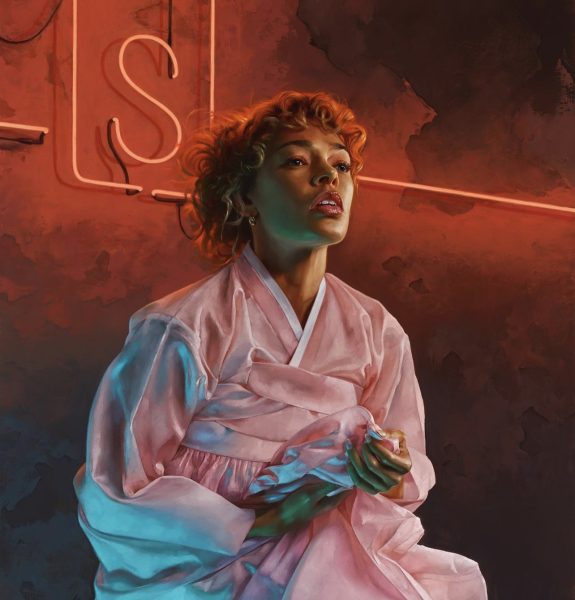
e and emphasized the fact that the earliest stages of any art piece, especially oil painting, will not look like the finished piece. He said that art has its “ugly” stage and that in order to create successful pieces, artists must stick with their projects and see through the early stages.
Senior Alayna Matern questioned, “How do you begin to get your work into public view, and what connections do you need to make in order to do so?” Nagel said, “The whole social media thing has really changed the process of it. …As far as I think traditional galleries go is to be a patron of the gallery. My first show that I ever did was a gallery that I wanted to show at, and I was able to just because I started going to shows and [because] I was supportive of the gallery.” He further explained that each artist needs to find a gallery that fits his or her work and is willing to showcase his or her pieces. He compared it to the acting world and how the process was similar to a casting call.
I really enjoyed speaking with Aaron. It was so awesome to hear his story and what it is really like to be a professional artist. I am really happy Mr. Sena set this up.”
— Elena McDonald, Class of 2024
The portfolio students spent the class period speaking with Nagel and left with new advice and wisdom to aid them in the course. They thoroughly enjoyed and were enlightened by this interview. “I really enjoyed speaking with Aaron. It was so awesome to hear his story and what it is really like to be a professional artist. I am really happy Mr. Sena set this up,” senior Elena McDonald shared.
Outside of the in-class interview, Nagel advised that aspiring artists “make as much art as possible.” He said, “Practice, practice, practice. Social media and marketing and exhibiting are all important, but they are useless if the art isn’t there, so make sure to do the work. And find comfort in the fact that you are getting better even if progress is slow. If all goes well, in the very near future, you will be slightly embarrassed by the work you are making right now! As it should be.”
To students who hope to pursue a career in art, he said, “All we can do as artists is make the best art we can— and that’s it. If that art happens to line up with trends or commerce or luck, … then that is great. But if not, we are still artists. We may have to supplement our income to make ends meet, or use our skills for something art-adjacent, but if we are making the art we need to make as well, we are on the right path.”
For the rest of the year in portfolio, Sena plans on continuing the Visiting Artist series and having more artists visit during each marking period of the year. As for portfolio students, they now have a new mindset and a new artist to draw inspiration from.

